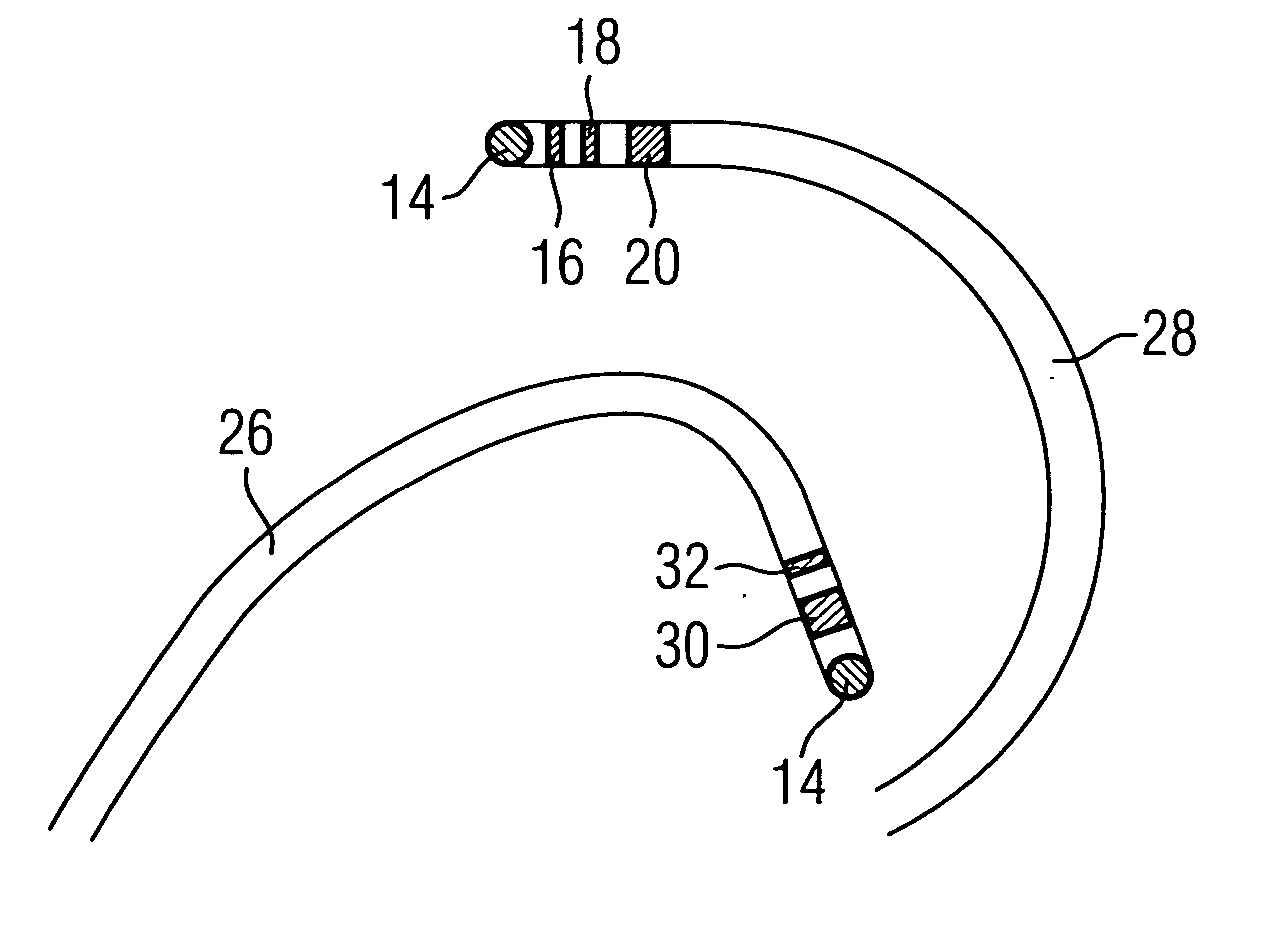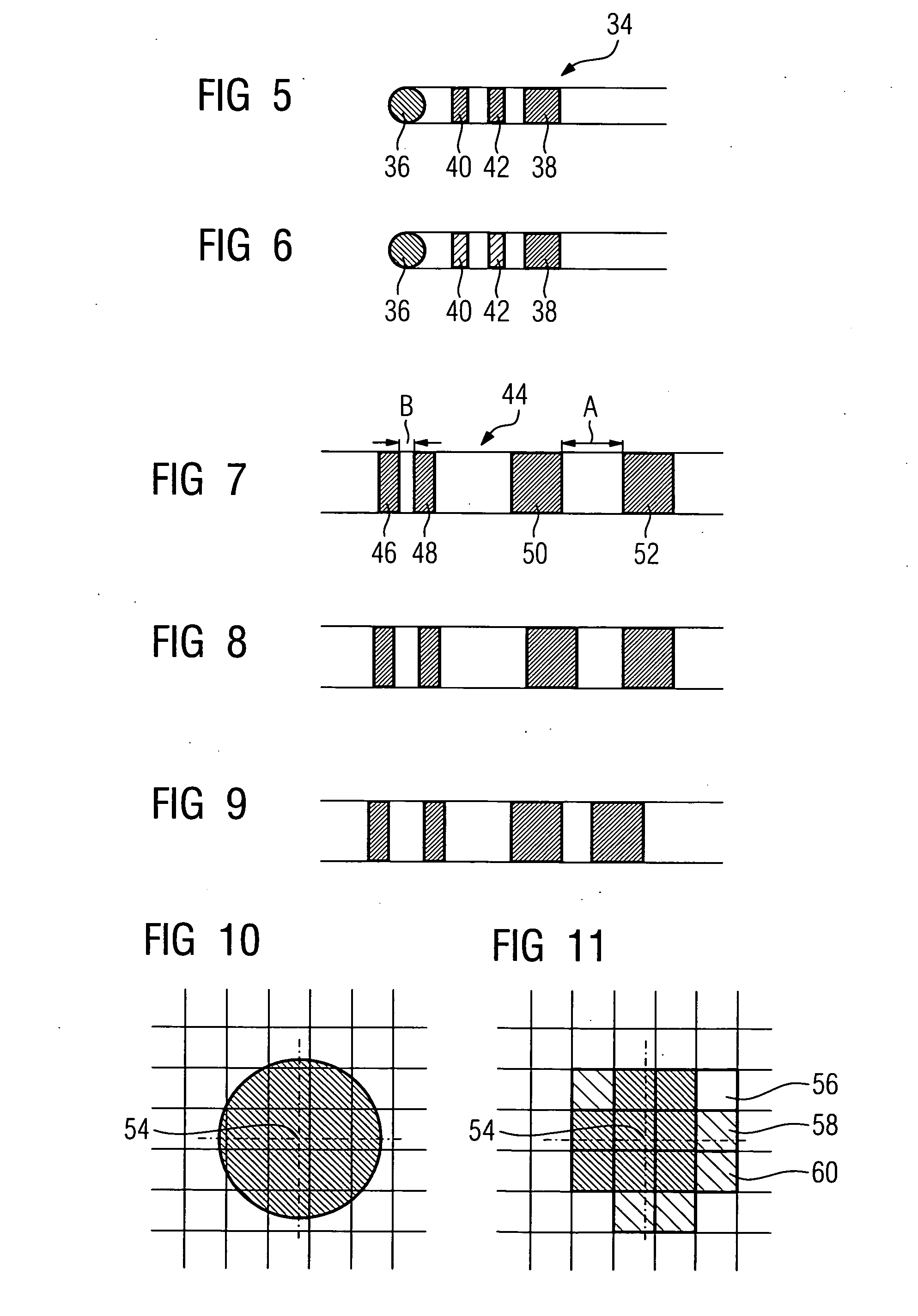Interventional instrument with marking element
a technology of marking element and interventional instrument, which is applied in the direction of catheters, diagnostics, applications, etc., can solve the problems of difficult identification, difficult placement of catheters, and sometimes difficult differentiation of catheters used simultaneously, and achieve the effect of simplifying the automatic analysis of x-ray images
- Summary
- Abstract
- Description
- Claims
- Application Information
AI Technical Summary
Benefits of technology
Problems solved by technology
Method used
Image
Examples
Embodiment Construction
[0073]FIG. 1 shows a section of a catheter 10, specifically the tip 12 of the catheter and the following section of the catheter. A sphere-shaped marking element 14 is located at the tip of the catheter 12. Behind the catheter tip there are further marking elements, namely ring-shaped marking elements 16, 18 and 20. In this case the ring-shaped marking elements 16 and 18 are narrower than the ring-shaped marking element 20. Overall, the ring-shaped marking elements can identify the catheter 10 in the manner of a barcode.
[0074] In an embodiment variant which is shown in FIG. 2, a serpentine, i.e. S-shaped, marking element 22 is linked to the sphere-shaped marking element 14.
[0075] In an embodiment according to FIG. 3, the catheter 10 has a jacket tube 24 which contains a fluid, namely an iodine contrast medium.
[0076] A common feature of the embodiments according to FIG. 1 is that the marking elements are recognizable in the X-ray image, whereas the actual catheter is essentially n...
PUM
 Login to View More
Login to View More Abstract
Description
Claims
Application Information
 Login to View More
Login to View More - R&D
- Intellectual Property
- Life Sciences
- Materials
- Tech Scout
- Unparalleled Data Quality
- Higher Quality Content
- 60% Fewer Hallucinations
Browse by: Latest US Patents, China's latest patents, Technical Efficacy Thesaurus, Application Domain, Technology Topic, Popular Technical Reports.
© 2025 PatSnap. All rights reserved.Legal|Privacy policy|Modern Slavery Act Transparency Statement|Sitemap|About US| Contact US: help@patsnap.com



